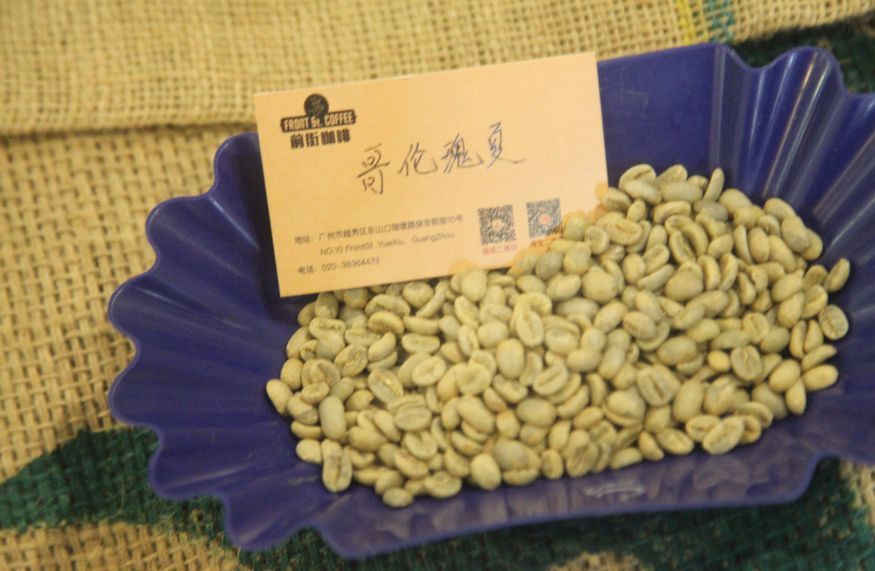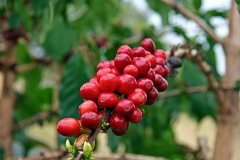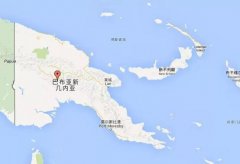What are the flavor and taste characteristics of rose summer coffee beans in the producing areas and their classification criteria
Rose coffee is known as the most expensive coffee in the world. It is famous in coffee circles. Today, let's briefly introduce the development history, production area, flavor characteristics and his grade classification of Guixia.
The story of Geisha Coffee dates back to 1936 when Britain was colonizing Abyssinia, Captain Richard Wiley was consul of Bench Maji and his mission was to collect 10 pounds of coffee seeds from the area around Geisha Mountain in what is now Ethiopia. How the descendants of these geisha coffee seeds arrived at Hacienda La Esmeralda and how their unique flavor presentations were discovered reflects the complex and sometimes ambiguous history of the global coffee trade.
Captain Whalley's mission was to collect the seeds as part of a census of Ethiopian wild coffee varieties ordered by Kenya's Director of Agriculture. Ethiopia's wild forests are home to coffee, and the survey was conducted to assess the commercial viability of hundreds of "germplasm"-small regional mutations of major coffee varieties-grown in other British colonies. Even in the 1930s, coffee traders had received news about the regional market for delicious coffee in the Gesha region.
It is unclear how the Gesha area, or sometimes Gecha area, was recorded as a geisha, but reports at the time listed this 10-pound sample collected and hand-processed by Captain Whalley from around the geisha hill. When the seed subsequently travelled to Tanzania and Costa Rica to Hacienda La Esmeralda, the nickname persisted. Geisha coffee seeds are exchanged between gene banks and a network of coffee research stations before reaching CATIE in Costa Rica, where Hacienda La Esmeralda acquires them. At the time, there was not much mention of the sample other than resistance to "Ojo de Gallo."
It was the resistance of geisha coffee to «ojo de gallo» that eventually brought the seeds to Hacienda La Esmeralda. Coffee has been grown on and around Peterson Family Farm since the 1960s, but it is harvested and maintained in different ways, and a large variety and germplasm are grown throughout the farm. In the 1990s, as coffee production became more visible, the Petersons acquired a new high-altitude farm they named Jaramillo. The farm was recently destroyed by coffee leaf rust, but Daniel Peterson noticed that the geisha trees were not so badly damaged, so they decided to plant geisha in more parts of the farm, including higher parts above 1650 meters. Than the geisha I've planted before.
Rose Summer Coffee from Rose Summer Village also has its own internal classification of Rose Summer: Bid, Gold, Red, Green, Chaka Batch Rose Summer.

> Bidding batches
It is the top batch of estates that have undergone rigorous screening. The cup test scores of the bidding batch in 2018 alone are 88.15-92.67 points, which are divided into Champion s Reserve and Farm Reserve.
> Gold standard batch
It has complete traceability, outstanding flavor and high complexity of each batch, which is the most excellent standard of manor next to bidding;
> Red label batch
Batches with complete traceability have typical flavor of rose summer village, flavor intensity and complexity are slightly weaker than gold standard batches, and are single batch with very high cost performance;
> Green Label Lot
A batch from a single plot and a single variety, with typical rustic flavor, flavor intensity and complexity slightly weaker than the red label batch;
>Chaka batches
The coffee blend produced by Guixia Village includes three varieties, namely Gori Gesha, Gesha 1931 and Illubabor (Ethiopian native disease-resistant variety).
Front Street Coffee has a gold-label rose, which replicates the genetic diversity of the Gori Gaisha forest. Medium light toasted with sweet orange, strawberry, honey and fermented aromas.
Also Front Street Coffee has a rose from Colombia that uses a washing process.

Cup test: citrus, carambola, orange, oolong tea, floral, honey
Brewing advice
Recommended cooking method: hand brewing
Filter cup: Hario V60 or cake filter cup
Water temperature: 90-92℃
Powder water ratio: 1:15-1:16
Grindability: BG 5R (58% pass rate of Chinese standard No.20 sieve)
Cooking method: 30g water steams for 30 seconds, water injection to 130g stages, water level drops when the powder bed is about to be exposed, continue to water injection to 230g cut off water, water level drops when the powder bed is about to be exposed, remove the filter cup,(steams start timing) extraction time is two minutes.
The dota region in costa rica is known for specializing in the production of microbatches of roses. Especially Goddess Manor, this area is a typical plateau area, and the volcanic soil with high mineral content provides a perfect growth environment for Rose Summer. This coffee Candle House rose has floral, honey, lemon and berry flavours.

As we all know, coffee produces different flavors in different regions. Of course, the production areas of rose summer are far more than these, other Bolivia, Peru, Selvado, Mexico, Ecuador, China Taiwan and other regions.
Important Notice :
前街咖啡 FrontStreet Coffee has moved to new addredd:
FrontStreet Coffee Address: 315,Donghua East Road,GuangZhou
Tel:020 38364473
- Prev

Influence of coffee bean producing area and its natural environment on coffee flavor and taste characteristics of Kenyan coffee
The flavor of a bean in African coffee Kenyan coffee producing area is closely related to its producing area, altitude, climate, treatment and variety. . Kenya is located in eastern Africa, the equator runs through the central part, and the Great Rift Valley of East Africa runs through the north and south. The environment is located in the tropical monsoon area, but affected by its high topography, it is a savanna climate with great seasonal differences in precipitation. Receive
- Next

The development history and grading standard of coffee beans in Papua New Guinea Why it is called Little Blue Mountain Coffee
Producing area Information Independent State of Papua NewGuinea (PNG) Papua New Guinea is an island country in the western South Pacific Ocean and the second largest country in Oceania. Papua near Guinea Coffee is located in Oceania, with plains and lowlands in the south of Papua New Guinea and a central mountain system in the middle, where most of the coffee is grown.
Related
- Detailed explanation of Jadeite planting Land in Panamanian Jadeite Manor introduction to the grading system of Jadeite competitive bidding, Red bid, Green bid and Rose Summer
- Story of Coffee planting in Brenka region of Costa Rica Stonehenge Manor anaerobic heavy honey treatment of flavor mouth
- What's on the barrel of Blue Mountain Coffee beans?
- Can American coffee also pull flowers? How to use hot American style to pull out a good-looking pattern?
- Can you make a cold extract with coffee beans? What is the right proportion for cold-extracted coffee formula?
- Indonesian PWN Gold Mandrine Coffee Origin Features Flavor How to Chong? Mandolin coffee is American.
- A brief introduction to the flavor characteristics of Brazilian yellow bourbon coffee beans
- What is the effect of different water quality on the flavor of cold-extracted coffee? What kind of water is best for brewing coffee?
- Why do you think of Rose Summer whenever you mention Panamanian coffee?
- Introduction to the characteristics of authentic blue mountain coffee bean producing areas? What is the CIB Coffee Authority in Jamaica?

